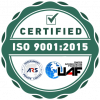In this Q and A we’re going to answer :
- How do I engage my offshore staff to get the best result?
- How do I complete initial and ongoing training?
- How do I know if my new team member is performing in the role?
Transcript of the video:
David Judge from Affordable Staff and welcome to our RAW Q&A session around outsourcing.
We’ve created this series of videos for businesses that have considered outsourcing and have genuine questions, or concerns that need answering.
Today’s format is around upskilling and training as this is an area that we find clients seek guidance with.
We’re going to talk about engaging staff to get the best result, initial and ongoing training and once you’ve gone through the first 2 steps, how you know if your team are performing in the role.
An important fact is that training can be very easy as long as you follow the process we mention in today’s video. So why are we discussing this topic in one of our videos? Simply because we’ve watched a number of our clients and have ourselves the experienced pain when these processes weren’t followed.
Ok, Let’s get into it.
How do I engage my offshore staff to get the best result?
Employing staff is the first step of several stages of being able to delegate tasks. At this stage it’s critical that your staff understand the tasks, their role and responsibilities.
Once you have this information what is the best way to engage your offshore staff?.
First of all it’s important to know what it means to engage?
This means to email, talk and chat to your team regularly (at least in the beginning) to understand how well they understand the tasks. This should be at least 1 – 2 hours each day and it may mean you (or one of your nominated local staff) may have to hold their hands and just be there as a support.
At this early stage it’s not enough to send an email of the tasks, give them generic tutorial videos of those tasks and allocate work based on those videos.
We’ve watched this time and time again from clients that may not have the time or think that once they’ve employed their outsourced team member that they can train themselves on their tasks.
Even if you are employing a staff member for a specialised role like a ‘property manager’ or an ‘accountant’ if you don’t invest this time at the beginning it will take longer for a person to understand their role and truly perform well in that role.
So to summarise, engage your team by email, chat or voice and at the beginning engage everyday and regularly.
How do I complete initial and ongoing training?
How you go about your training will determine how fast and well offshore staff can pick up and perform their role.
When completing your initial training you may share too much information with your staff which can cause information overload and as a result, make it harder for a person to understand the overall tasks they need to perform within that role.
Overcoming this is really simple… You train in stages instead of in one big hit. Take the tasks and break them into smaller training sessions. It’s easy to presume a person that has completed training just ‘knows’ how to do the job so you should also have practical exercises within your business that a staff member can perform to make sure they understand the details of that task.
At this stage you need to invest at least double the amount of time in the practical as this will help them to experience real scenarios and will clear up any confusion around the task.
Again by following this process it makes it easier as there’s nothing more painful than spending a lot of time giving one big lump of training, just to realise that time is wasted as they’ve only retained a small percentage of the overall information.
So to summarise the best way to complete initial and ongoing training is to break it into smaller sessions, expose them to a lot of hands on (and be there as a support during this time) and for you to ask a lot of questions so you’re confident that they understand the task.
How do I know if my new team member is performing in the role?
If you are effectively engaging with your team member and are breaking the initial and ongoing training into smaller bites, then you will quickly understand how well your team member is performing.
What I just said is really important.
The times when outsourcing has failed is when clients won’t even have a conversation with their staff and offer very little guidance and support.
You will know that your staff member is engaged and is able to perform the task effectively as they will be completing the allocated tasks, offering feedback, suggestions and input, which you wouldn’t know if your weren’t communicating with them.
We most recently had a client that said their outsourced staff member was not working out just to discover they weren’t even talking to them or even offering any feedback. Their only form of communication was via 2 emails a week.
The bottom line is… if you want outsourcing to work then you will need to treat your staff like a part of your team. If you do, then you’ll know the areas of improvement and more specifically how well they’re performing.
Ok, that’s it
If you’d like to find out more about how outsourcing can work within your business, you can call us anywhere within Australia on 1300 139 482.
This is David Judge from Affordable Staff showing Australian businesses how to succeed with outsourcing.

